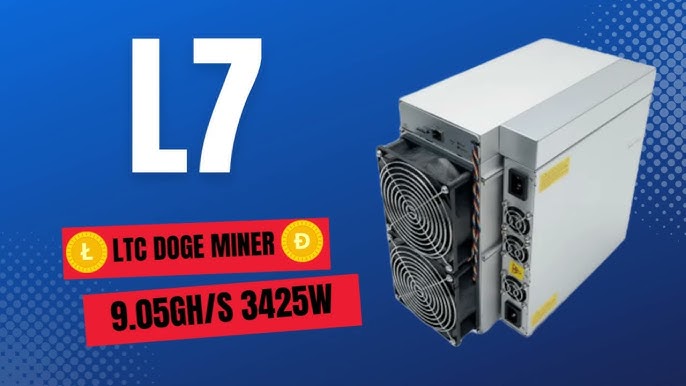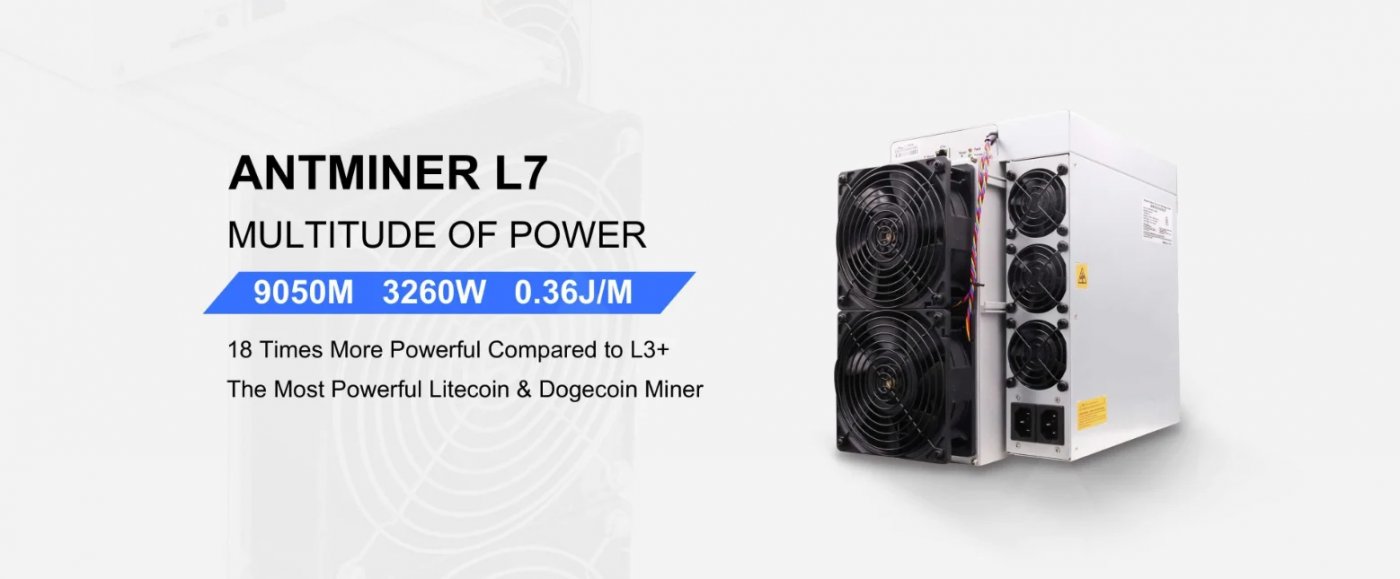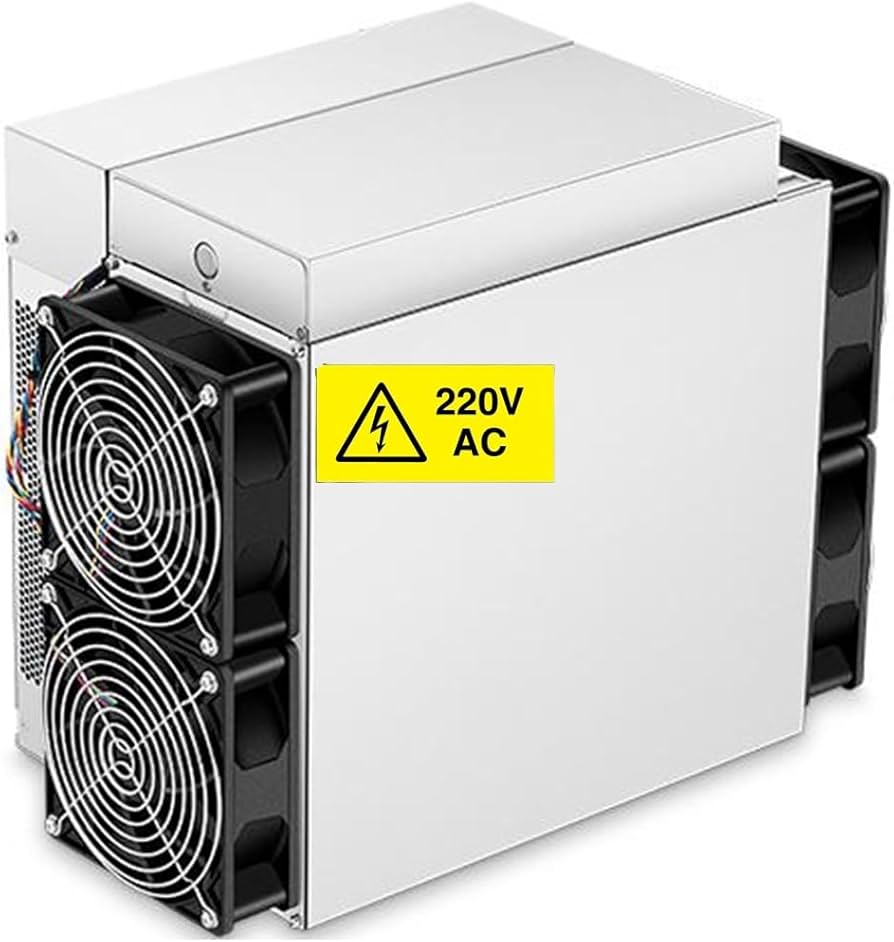Litecoin Miner L7 Software Configuration for Best Performance
The Litecoin L7 Miner by Bitmain has quickly become a go-to solution for miners targeting Scrypt-based cryptocurrencies like Litecoin (LTC), Dogecoin (DOGE), and Beldex (BEL). With its industry-leading hashrate of 9050 MH/s (±3%) and exceptional power efficiency of 0.36 J/MH (±5%), the L7 is designed to maximize profitability while minimizing operational costs. However, to truly unlock its full potential, proper software configuration is essential. In this article, we’ll guide you through the steps to optimize your L7 miner’s performance, ensuring you get the most out of this powerful machine.
Understanding the Litecoin L7 Miner
Before diving into software configuration, it’s important to understand what makes the L7 stand out. The miner is built on the Scrypt algorithm, which is specifically designed for cryptocurrencies like LTC and DOGE. Its compact design, global adaptability, and user-friendly maintenance features make it suitable for both small-scale and large-scale mining operations. Additionally, Bitmain’s 180-day warranty and Minerfixes’ comprehensive support ensure that miners can operate with confidence.
However, even the best hardware requires proper setup to perform at its peak. Software configuration plays a critical role in optimizing hashrate, reducing downtime, and ensuring long-term reliability.
Step 1: Initial Setup and Firmware Update
Unboxing and Hardware Check
When you first receive your L7 miner, inspect it for any physical damage during shipping. Ensure all components, including the power supply unit (PSU) and Ethernet cable, are included. Connect the miner to a stable power source and network using the provided accessories.
Updating the Firmware
Bitmain regularly releases firmware updates to improve performance, fix bugs, and enhance security. Before starting your mining operation, check for the latest firmware version on Bitmain’s official website or through the miner’s web interface. Updating the firmware ensures your miner operates with the latest optimizations and features.
To update:
- Access the miner’s web interface by entering its IP address in your browser.
- Navigate to the “System” tab and select “Upgrade.”
- Upload the firmware file and follow the on-screen instructions.
Step 2: Configuring Mining Pool Settings
Choosing the Right Mining Pool
Mining pools allow miners to combine their computational power, increasing the chances of earning rewards. When selecting a pool, consider factors like pool fees, payout methods, and server locations. Popular options for Scrypt mining include F2Pool, Antpool, and LitecoinPool.
Setting Up the Pool in the Miner
Once you’ve chosen a pool, configure your miner to connect to it:

- Log in to the miner’s web interface.
- Navigate to the “Miner Configuration” tab.
- Enter the pool’s URL, port number, and your wallet address.
- Save the settings and restart the miner.
For redundancy, it’s recommended to add at least two pool addresses. This ensures uninterrupted mining in case one pool goes offline.
Step 3: Optimizing Hashrate and Power Efficiency
Adjusting Frequency and Voltage
The L7’s default settings are optimized for balanced performance, but you can fine-tune them to achieve higher hashrates or better power efficiency. This process, known as overclocking or underclocking, involves adjusting the miner’s frequency and voltage settings.
- Overclocking: Increases the hashrate but may lead to higher power consumption and heat generation.
- Underclocking: Reduces power consumption and heat but may lower the hashrate.
To adjust these settings:

- Access the miner’s web interface.
- Navigate to the “Advanced Settings” tab.
- Modify the frequency and voltage values incrementally, monitoring the miner’s stability and temperature.
Note: Overclocking can void your warranty and reduce the miner’s lifespan if not done carefully. Always monitor temperatures and ensure adequate cooling.
Temperature Management
The L7 operates optimally within a temperature range of 0°C to 40°C. To maintain this:
- Ensure proper ventilation in your mining facility.
- Use external fans or cooling systems if necessary.
- Regularly clean the miner’s air intake and exhaust vents to prevent dust buildup.
Step 4: Monitoring and Maintenance
Using the Web Interface
The L7’s web interface provides real-time data on hashrate, temperature, and power consumption. Regularly monitor these metrics to identify any anomalies or performance issues.
Automating Alerts
Set up email or SMS alerts to notify you of critical events, such as hardware failures or temperature spikes. This allows you to address issues promptly, minimizing downtime.
Routine Maintenance
The L7’s user-friendly design makes maintenance straightforward. Regularly replace worn-out components, such as fans, and keep the miner clean to ensure consistent performance.
Step 5: Troubleshooting Common Issues
Low Hashrate
If your miner’s hashrate drops below expected levels:

- Check the pool connection and switch to a backup pool if necessary.
- Verify that the firmware is up to date.
- Inspect the miner for overheating or hardware issues.
High Power Consumption
Excessive power usage can erode profitability. To address this:
- Revert to default frequency and voltage settings.
- Ensure the PSU is functioning correctly.
- Consider underclocking the miner to reduce power draw.
Network Connectivity Problems
If the miner loses connection to the pool:

- Restart the miner and router.
- Verify the Ethernet cable and network settings.
- Contact your internet service provider if the issue persists.
Conclusion: Maximizing Your L7’s Potential
The Litecoin L7 Miner is a powerhouse for Scrypt-based cryptocurrency mining, offering unmatched efficiency and reliability. By following the steps outlined in this guide, you can optimize its software configuration to achieve the best possible performance. From updating firmware and configuring mining pools to fine-tuning hashrate and managing temperatures, each step plays a crucial role in maximizing your mining profitability.
Remember, successful mining is not just about hardware—it’s about how you configure and maintain your equipment. With the right setup and ongoing care, the L7 can be a valuable asset in your cryptocurrency mining journey. Whether you’re a seasoned miner or just starting out, the L7’s combination of performance, accessibility, and support makes it a smart investment for the future.
Invest in the Litecoin L7 Miner today, and take your mining operations to the next level!